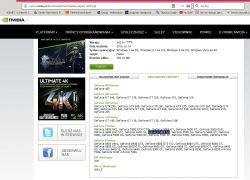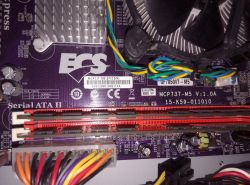FAQ
TL;DR: For GeForce 9500 GT owners, drivers work across 256–1024 MB VRAM; “These drivers will work with all 9*** series cards.” Use the correct 32/64‑bit Windows package and install chipset drivers to prevent YouTube audio wheeze. [Elektroda, rtj71, post #17112135]
Why it matters: This FAQ helps Windows 7/10 users with a Gainward/NVIDIA GeForce 9500 GT find the right drivers and fix post‑install audio issues.
Quick Facts
- One GeForce 9 Series driver covers 9500 GT cards, whether 256 MB or 1024 MB VRAM. [Elektroda, rtj71, post #17112135]
- Windows 10 uses the same driver version as Windows 7; 32‑bit packages differ in file size. [Elektroda, KMal, post #17112160]
- Installing 32‑bit chipset drivers on 64‑bit Windows 7 caused YouTube stutter; 64‑bit chipset drivers fixed playback. [Elektroda, newmp3, post #17112740]
- Seeing an NVIDIA logo during chipset install is normal; it’s the NVIDIA‑based motherboard chipset, not the GPU. [Elektroda, rimot, post #17112705]
Which driver should I use for a Gainward GeForce 9500 GT 1024MB?
Does VRAM size (256 MB vs 1024 MB) change the driver I need?
No. The 9500 GT shipped in 256 MB and 1024 MB versions, but both use one driver. “These drivers will work with all 9*** series cards.” [Elektroda, rtj71, post #17112135]
I’m on 32‑bit Windows. Which driver should I download?
Are Windows 10 and Windows 7 drivers the same for this card?
Yes. “Win 10 has the same driver.” Match the 32‑bit or 64‑bit package to your OS architecture to avoid issues. [Elektroda, KMal, post #17112160]
YouTube audio crackles after installing drivers—how do I fix it?
Mismatched chipset drivers caused this for the OP on Windows 7 x64. Install the correct 64‑bit chipset drivers and retest.
- Confirm Windows is 32‑ or 64‑bit.
- Remove wrong chipset drivers; install the matching 64‑bit chipset package.
- Reinstall your dedicated sound card drivers; restart and test YouTube.
This resolved their wheeze immediately. [Elektroda, newmp3, post #17112740]
Do I still need motherboard chipset drivers if I use a separate sound card?
Yes. Install the motherboard chipset drivers for stability, then ensure your sound card’s drivers are installed. This was advised in the thread and helped restore clean audio. [Elektroda, rimot, post #17112730]
How do I check if wheeze is my speakers or the sound card?
Connect the speakers to a phone. If they still wheeze, the speakers failed. If the sound is clear, the PC’s audio path is at fault. [Elektroda, rimot, post #17112689]
Why do I see an NVIDIA logo when installing motherboard drivers?
Your motherboard uses an NVIDIA chipset, so the installer shows the NVIDIA logo. “The NVidia installation logo is from the chipset.” This is normal and separate from the GPU driver. [Elektroda, rimot, post #17112705]
Where can I download MCP73T‑M5 motherboard drivers mentioned in the thread?
Should I uninstall NVIDIA HD Audio if I use a separate sound card?
Uninstalling NVIDIA HD Audio alone did not stop the wheeze for the OP. Focus on matching chipset and sound card drivers to your OS. They fixed audio after installing proper 64‑bit chipset drivers. [Elektroda, newmp3, post #17112668]
I installed 32‑bit drivers on 64‑bit Windows 7. What should I do?
Replace any 32‑bit chipset drivers with the correct 64‑bit versions, then reboot and test. The OP reported clean audio immediately after switching to 64‑bit chipset drivers. [Elektroda, newmp3, post #17112740]
Is the driver version number identical across 32‑ and 64‑bit packages?
Yes. The version number matches, but the package content and file size differ between 32‑ and 64‑bit. “The driver number is the same, but the content (size) of the file is different.” [Elektroda, KMal, post #17112160]
Can I skip integrated audio drivers if I have my own sound card?
Yes, you can skip onboard audio drivers if you rely on a dedicated card. As the OP put it, “I don’t need audio drivers because I have my own card.” [Elektroda, newmp3, post #17112712]




